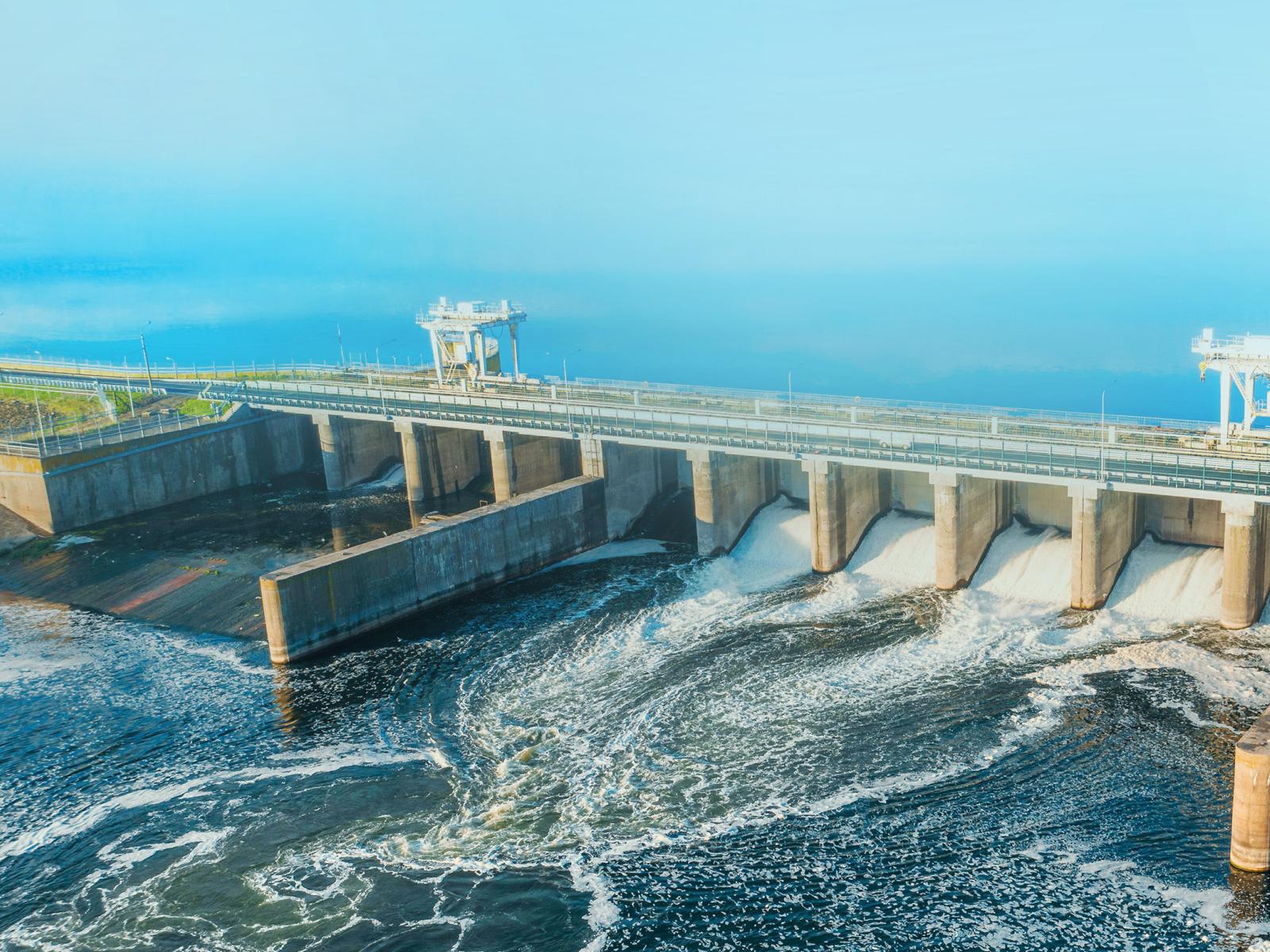Mapping a Modern Hydropower Vision
Developed with community input, the Hydropower Vision Roadmap lays out a path to achieve a shared vision for hydropower in 2050

The Hydropower Vision Roadmap focuses on activities that will help achieve flexible hydropower operations, safe dams, and sustainable approaches for the future.
(Photo by DedMityay | Shutterstock.com)
Hydropower plays an important role in today’s electrical grid and is poised to continue to do so in a clean energy future, but this long-time renewable energy source could use a modern makeover. That’s why the Department of Energy (DOE) released the Hydropower Vision in 2016 to establish a new perspective on hydropower’s role in our energy future. Since then, the DOE, Pacific Northwest National Laboratory (PNNL), other national laboratories, and the Hydropower Foundation have engaged with the hydropower community to outline a set of goals and activities needed to achieve that vision by 2050 in a new roadmap—which launched today.
“This was a massive, multi-organization, multi-year undertaking to capture the hydropower community’s concerns and priorities for the immediate and long-term future of hydropower,” said Alison Colotelo, PNNL hydropower program lead and co-lead for the roadmap project. “The roadmap provides a shared language and framework to direct collaboration, community building, strategic planning, and progress tracking efforts across hydropower.”
From vision to roadmap
In 2016, the Hydropower Vision report was developed with input from stakeholders across the hydropower community to summarize the status and potential of hydropower in the United States.
“The original Vision inspired new research and data to support hydropower decision making, increased dialogue within the broader hydropower community, and influenced policy recommendations,” said Timothy Welch, DOE lead for Hydropower Vision. “This reimagined roadmap will continue contributing to this impact now and in the future.”

Building on that, the new roadmap details the technical, economic, and institutional actions needed to optimize hydropower’s contribution to clean energy generation while preserving natural resources.
“We conducted extensive outreach and public forums with the hydropower community—through virtual workshops, discussions, and a comprehensive survey—to inform the roadmap,” explained Kevin Duffy, PNNL social scientist and engagement lead for the project.
Over 100 individuals engaged in the roadmap development process, across 14 sectors—including industry, resource agencies, dam owners/operators, and others—totaling over 60 hours of combined meeting effort. With input from that engagement, the team developed the roadmap organized into five action areas—advanced technology, sustainable development and operations, improved valuation, optimized regulatory processes, and enhanced collaboration, education, and outreach.
“The Vision for hydropower’s future centers on three key drivers—flexible operations, safe dams, and sustainable approaches,” explained Linda Church-Ciocci, executive director of the Hydropower Foundation. “To actually reach that future, we’ve worked with leaders and representatives across hydropower sectors to identify updated goals in the reimagined Vision that reflect where hydropower is now and where we want to be by 2050.”
A roadmap for the entire hydropower community
The roadmap includes specific goals and activities that support the Hydropower Vision, while offering a holistic view of hydropower and community needs. Rather than focusing on creating consensus, the roadmap was designed to represent the broad swath of concerns and priorities across different hydropower sectors. This approach fosters opportunities for future collaboration and synthesis across sectors by aligning the community along shared missions.
“Needs and priorities across sectors may vary, but we believe all hydropower community members can see themselves in some aspect of the roadmap,” said Colotelo.

Hydropower community members can use the roadmap to understand how their efforts fit into the broader vision for hydropower and what topics require further engagement. As the community advances toward a modern Hydropower Vision through targeted discussion and action, the roadmap will provide information about ongoing efforts, help track areas of progress, and provide a social network to advance the vision for a clean energy future.
“We plan to continue engaging with the community to keep our fingers on the pulse of the hydropower community as the energy landscape changes,” explained Colotelo.
Explore the new roadmap and become part of the ongoing effort to achieve the vision at an upcoming webinar on November 7.
The Hydropower Vision was funded and convened by the DOE Water Power Technologies Office.